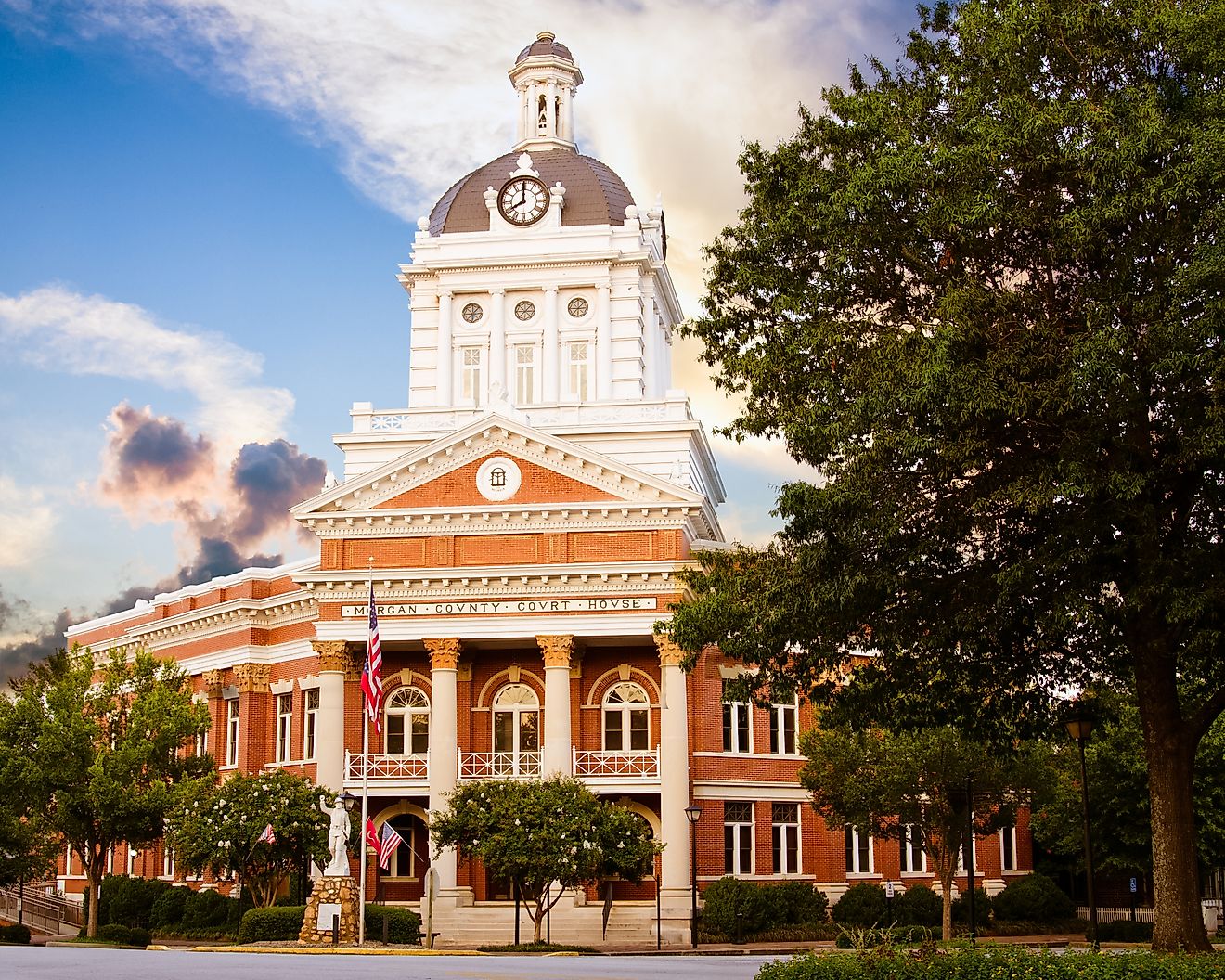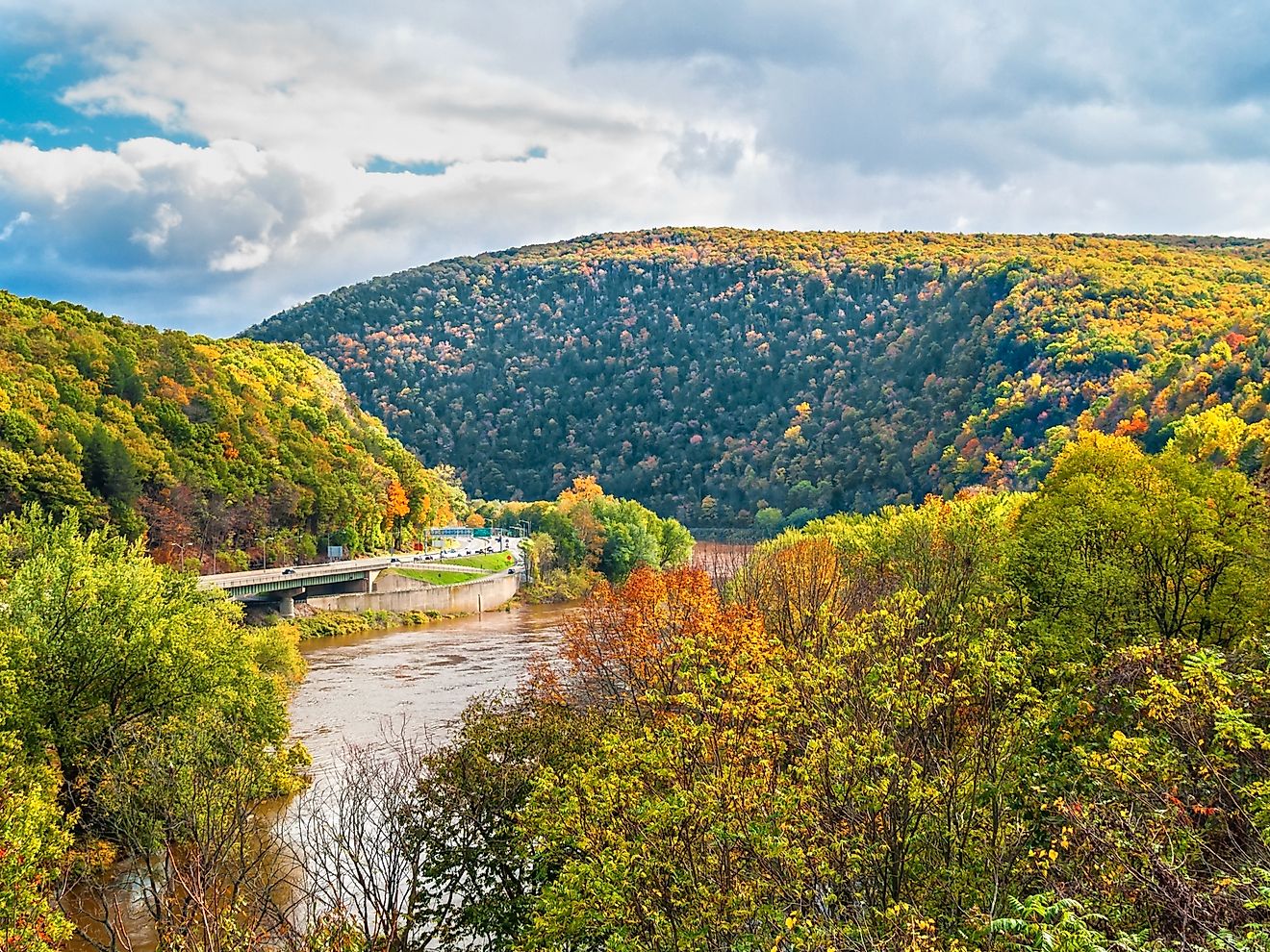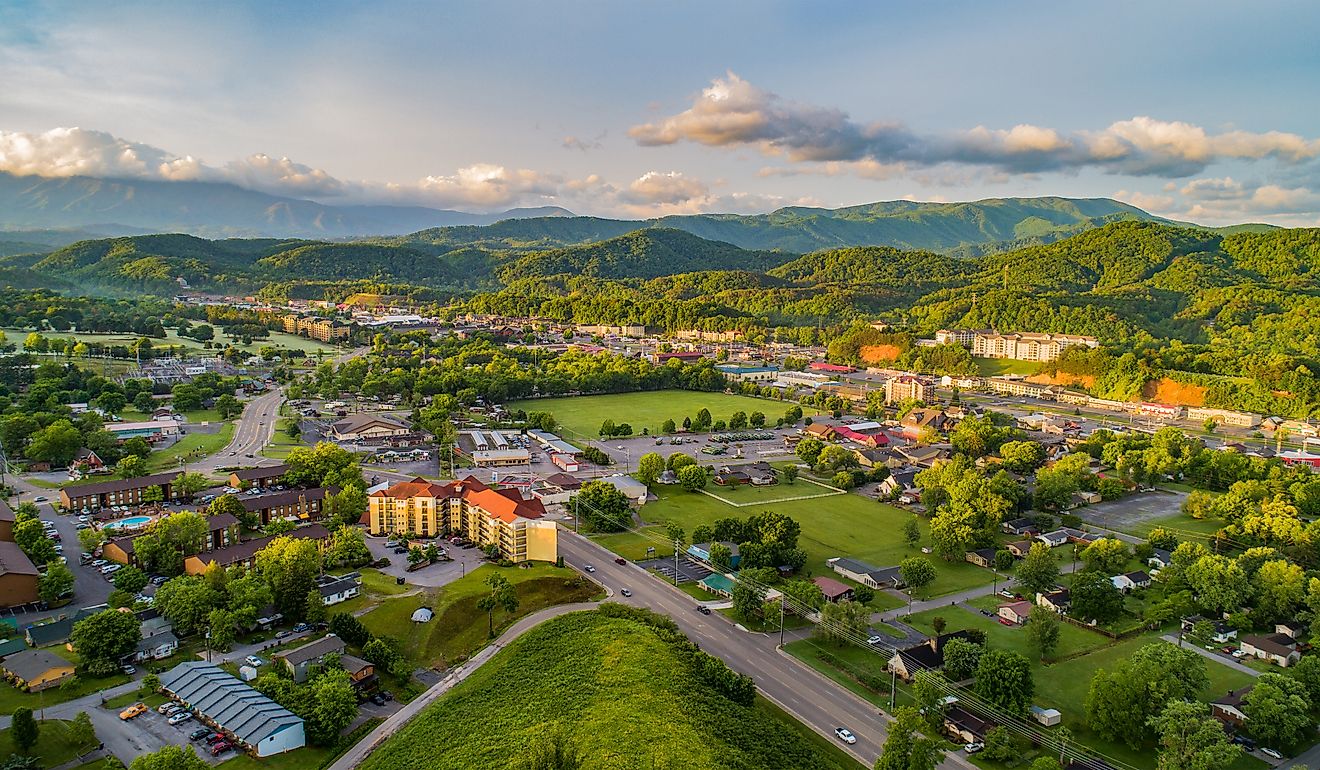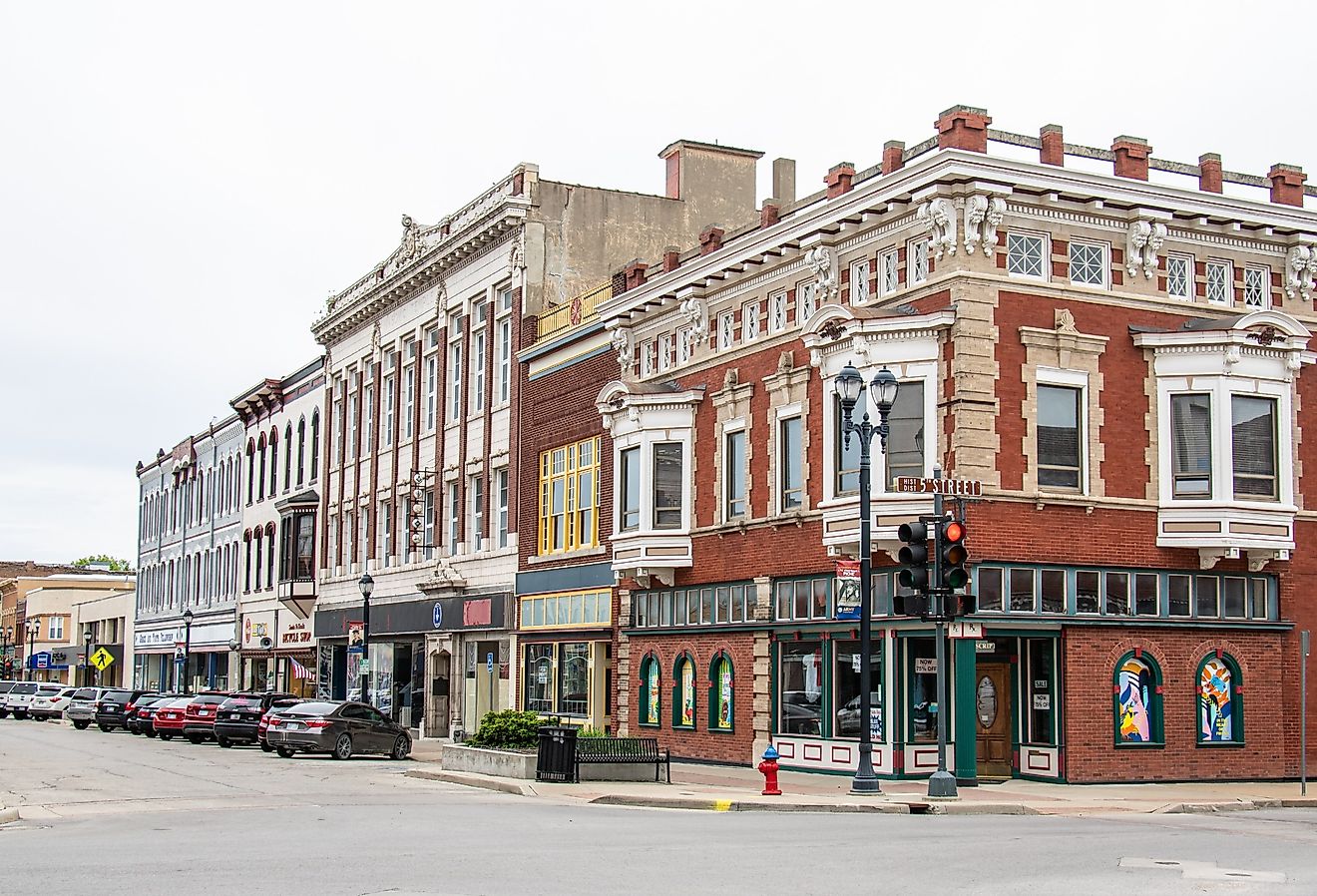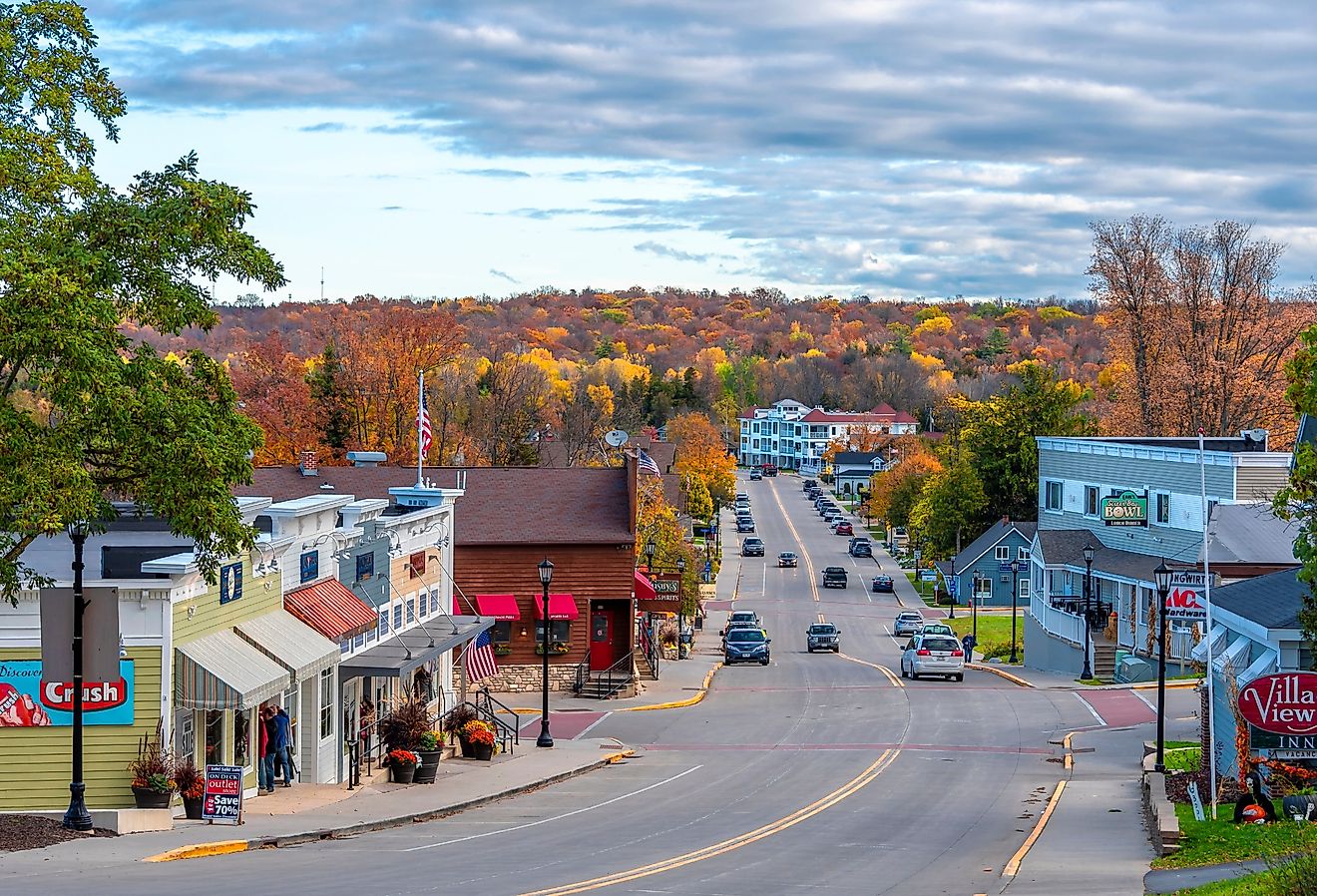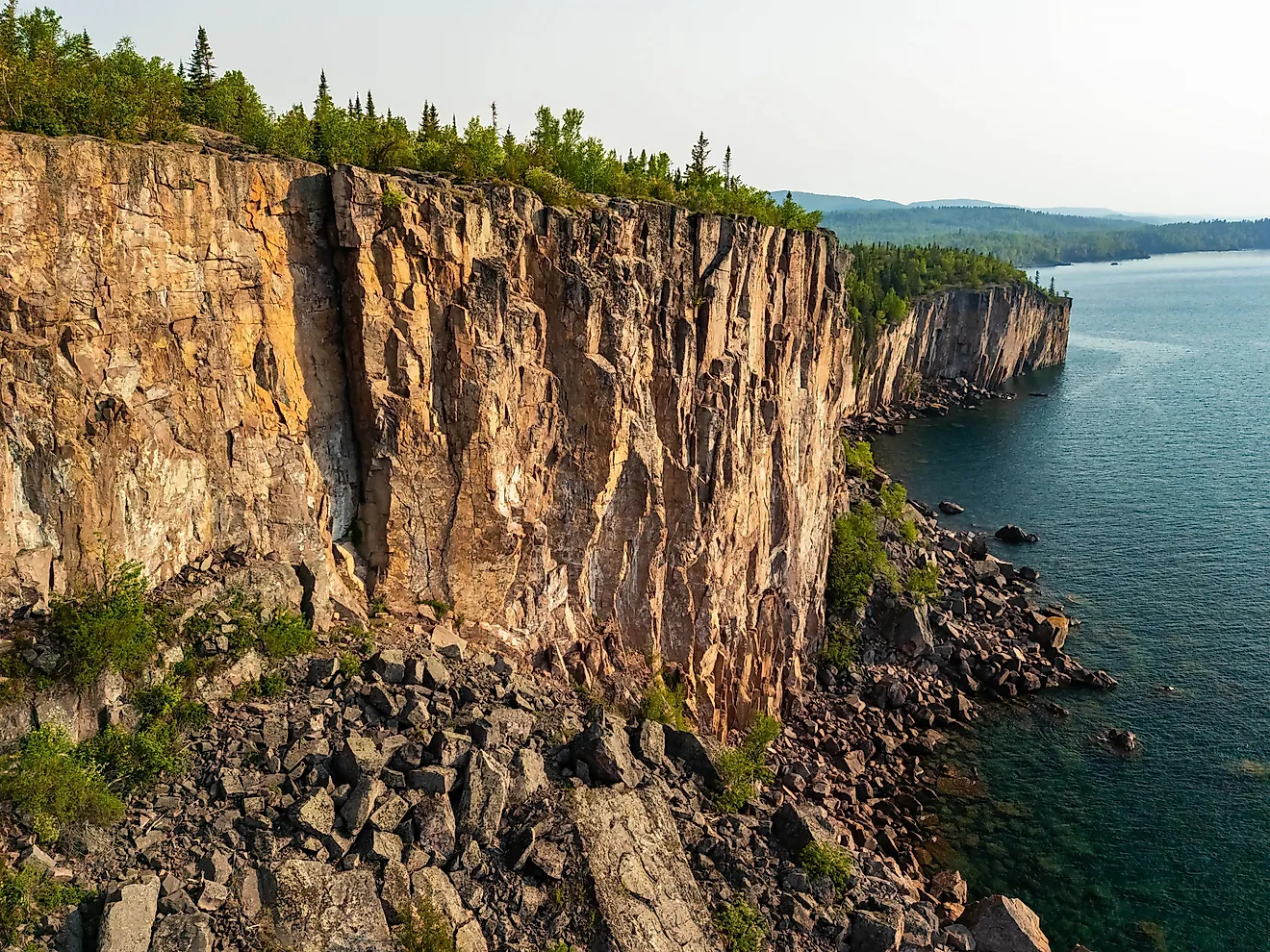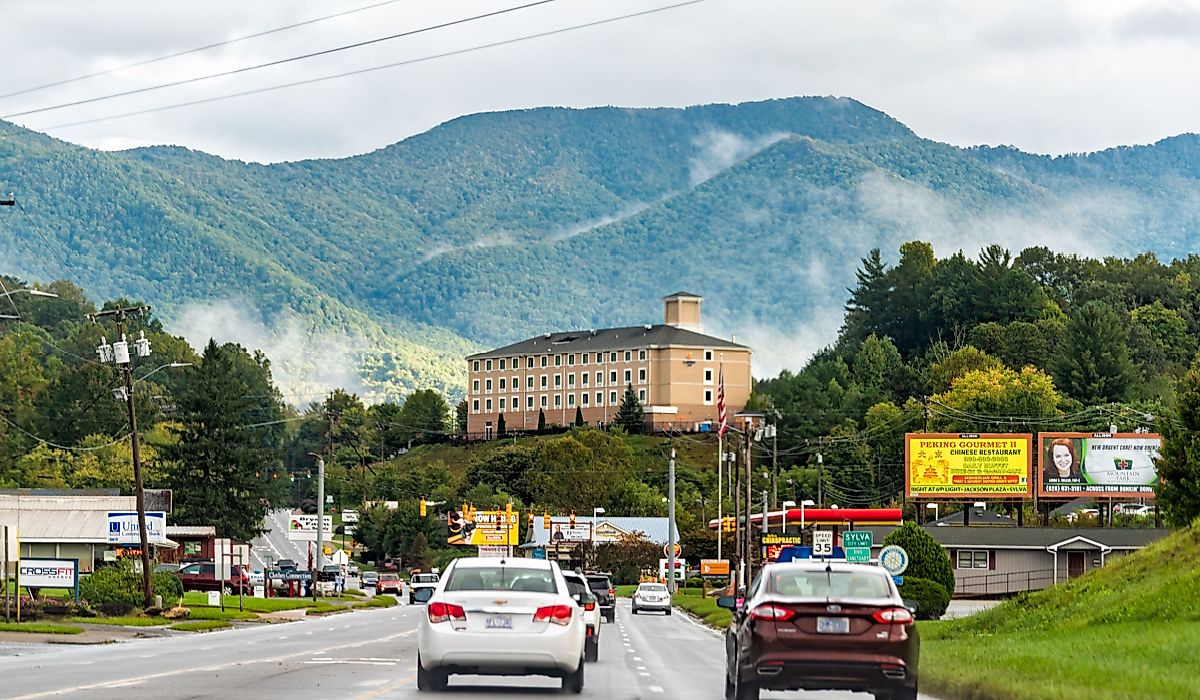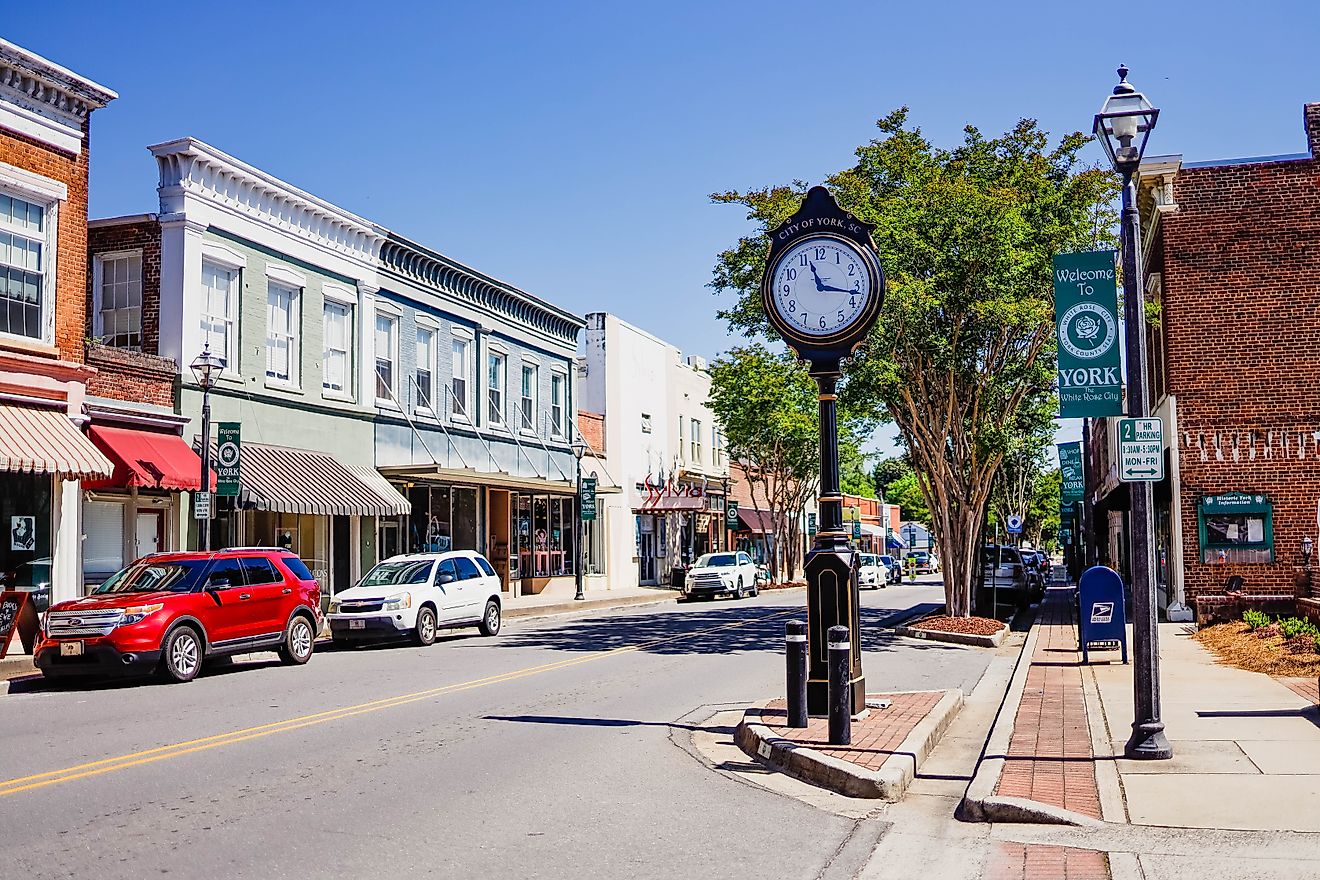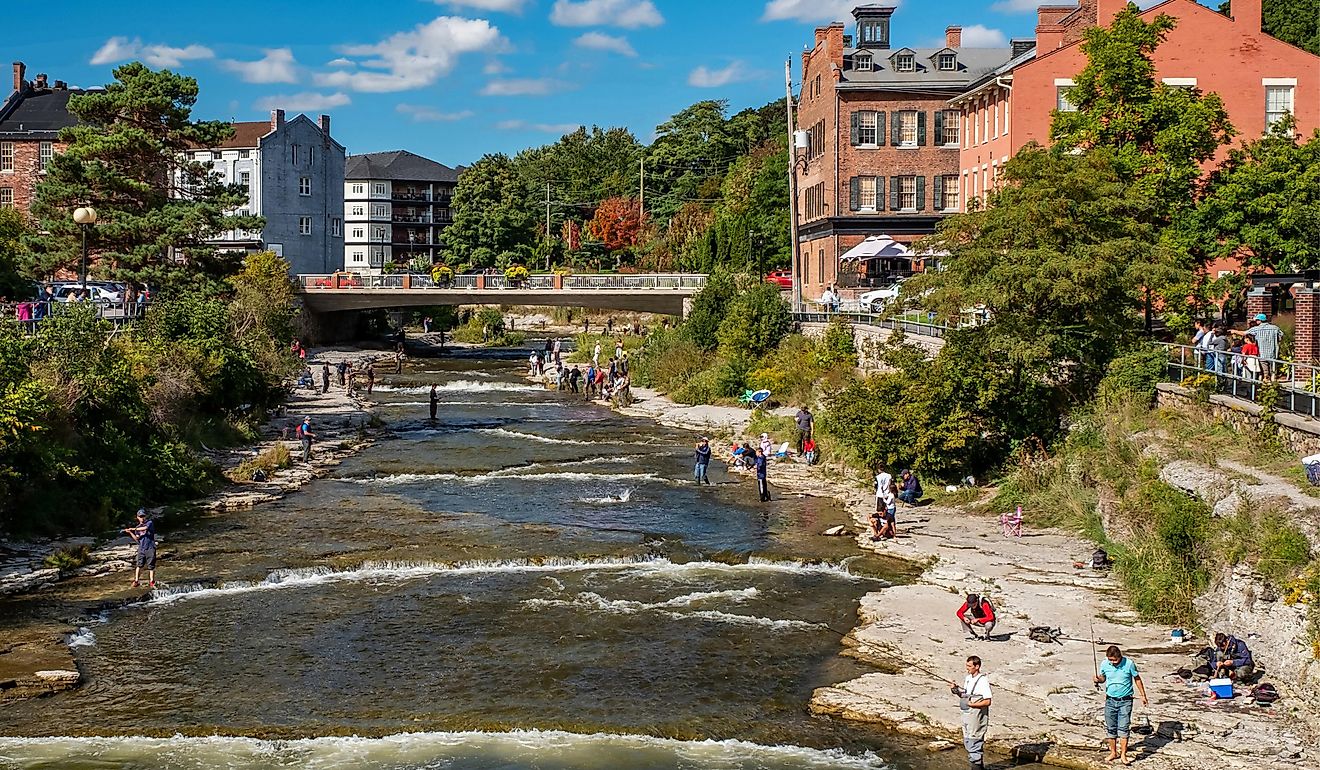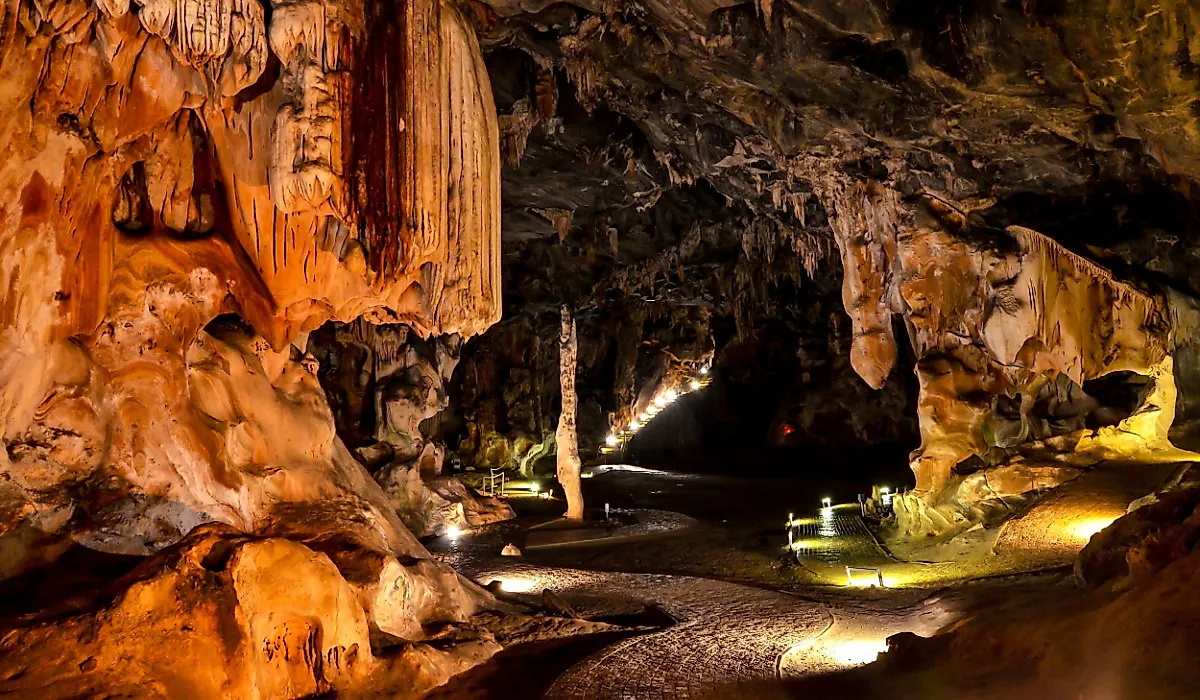
Mammoth Cave National Park’s Endless Passages Whisper Ghost Stories Of Prehistoric Rivers
A site of intrigue for thousands of years, many who visit Mammoth Cave National Park describe it as a spiritual experience. While some believe its caves are haunted by literal spirits, others reference a personal reaction to its profound beauty and magnitude. This response is understandable; while we understand much about Mammoth Cave’s origins, its unexplored depths evoke an air of mystery, luring adventurers from across the globe. Yet, whether its whispers are truly paranormal or emanating from the prehistoric rivers that carved its caverns, its splendor is palpable.
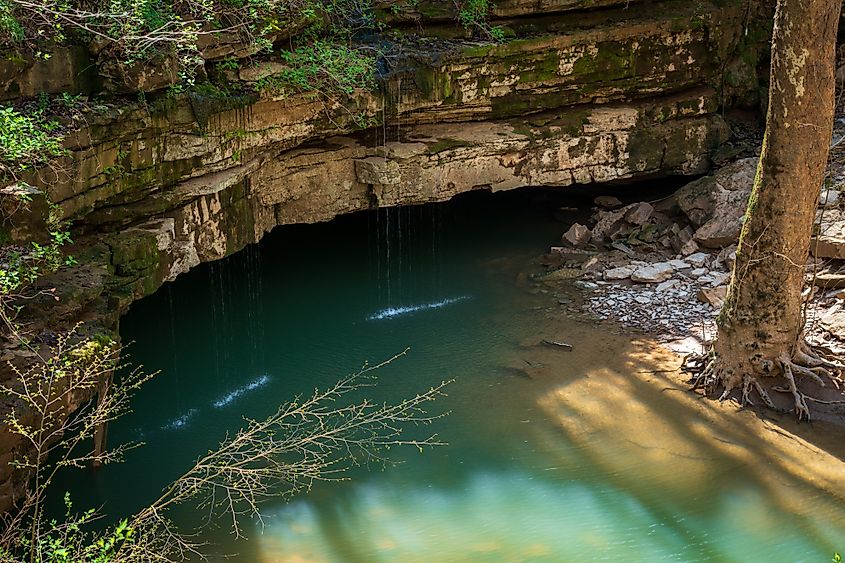
Location and Geography Of Mammoth Cave National Park
Spanning 52,830 acres in south-central Kentucky, Mammoth Cave National Park encompasses the longest-known cave system in the world. Over 400 miles have been surveyed and explored, but geologists believe this only scratches the surface of the ancient labyrinth. According to some, it could contain upwards of 600 miles of undiscovered passageways, not yet eyed by any human in history.
While much of Mammoth Cave remains a mystery, researchers are confident of its origins. The park is located in a limestone belt known as the Central Kentucky Karst, its rock beds dating back to the Mississippian Period. While these rocks formed around 320 million to 360 million years ago, the cave’s winding passages are much more recent. Approximately 10 million to 15 million years ago, prehistoric rivers and streams slithered and sunk into small cracks in the carbonate rocks, sparking the creation of an underground world.
Over time, these whispering waters dissolved and chipped away at the rocks, creating sinkholes, carving tunnels, and forming underground rivers. To this day, Mammoth Cave is still forming, its caverns echoing with drips and flows. Carrying on the work of its prehistoric rivers, cave streams course through its endless passages, some flowing back out into the expansive Green River, while others carve deeper into the earth at depths of up to 450 feet.
A Brief History
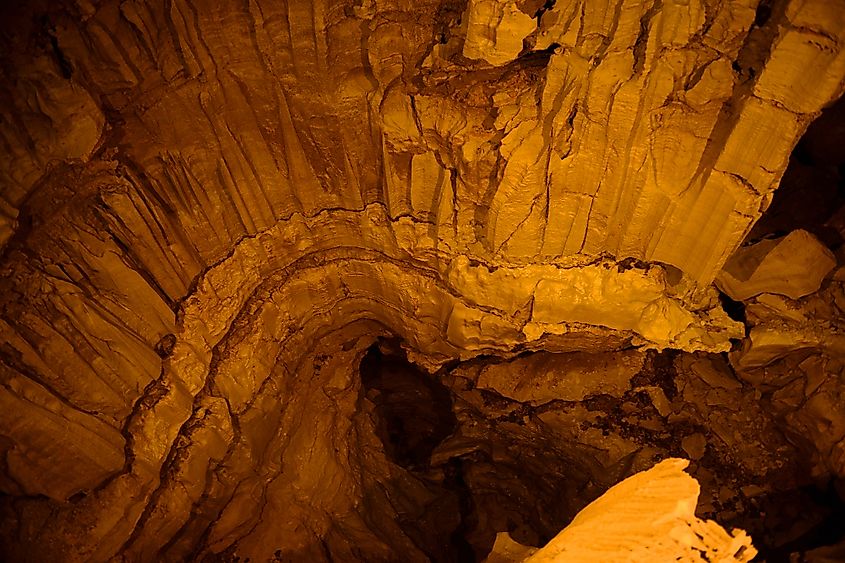
While Mammoth Cave welcomes over 600,000 visitors every year, its human history stretches back further. Approximately 5,000 years ago, prehistoric people were the first to explore its depths. Archeological evidence shows that these Indigenous explorers traveled over 19 miles in, collecting crystals and salts.
By the early 19th century, human curiosity of Mammoth Cave persevered, playing a pivotal role in early American tourism. A popular site by 1816, Mammoth Cave is one of North America’s oldest tourist attractions. Stephen Bishop, an enslaved cave guide, is credited with creating one of the first detailed maps of the underground network. In the 1840s, Bishop bravely ventured further than anyone had at that time, expanding maps and guiding tourists to new sections of the cave.
Eager to protect the landform and its surroundings, Mammoth Cave National Park was officially founded in 1941. Decades later, in 1972, passionate surveyors were able to connect the Mammoth Cave system and the Flint Ridge system, uniting them as the longest in the world. Today, the national park continues to thrive as a tourist destination, attracting spelunkers, hikers, kayakers, and campers alike.
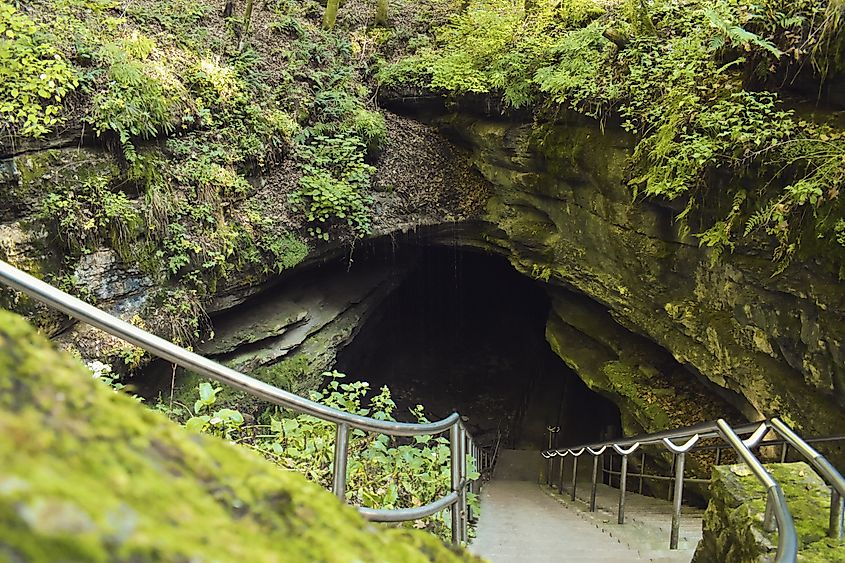
Must-See Landmarks
The Endless Passages Of Mammoth Cave National Park
There are many different types of passages in Mammoth Cave, with varying characteristics and formations. Canyon Passages are among the most common, formed by underground streams. Generally taller than they are wide, these passages are said to resemble canyons. When several erode together, this is called a Large Canyon Composite Passage, which can be seen on the higher levels when touring Mammoth Cave.
When the cave’s limestone layers exhibit vertical cracks, water flows downward, creating Vertical Shaft passages. Ranging 30 feet to 200 feet tall, these narrow passageways can be viewed on routes like the Historic Tour. The popular tour also showcases views of a Keyhole Passage, a combination of a Tube and Canyon Passage, whose quirky shape resembles a keyhole.
Cedar Sink
While technically considered an above-ground attraction, your adventure to the Cedar Sink sinkhole includes a dramatic descent. Reachable on a one-mile round-trip path, the hike to this landmark includes nearly 300 steps down several flights of stairs. With a canopy of trees overhead, hikers will cross several wood bridges across streams leading to the final landmark. The largest sinkhole in Kentucky, Cedar Sink’s bottom measures around seven acres. In spring and summer, the area is also colored with dozens of wildflower species.
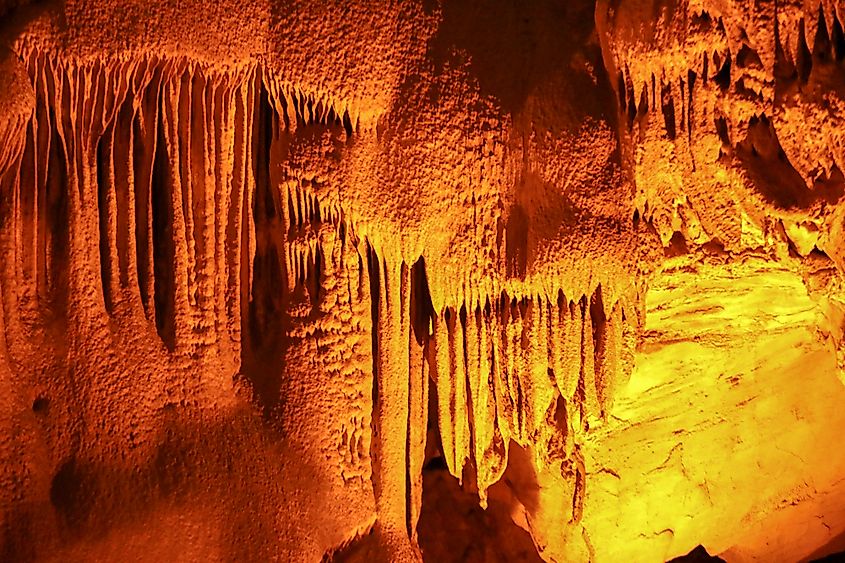
Frozen Niagara
One of Mammoth Cave’s most iconic landmarks, Frozen Niagara is a sight to behold. After taking a short bus ride from the visitor center to the cave entrance, visitors can begin the journey to its wonders. The cave site, named for its likeness to a frozen Niagara Falls, was first officially discovered in the 1920s. A tourist attraction ever since, the geological formation displays a massive collection of dripstone, around 75 feet high and 45 feet wide. This unique natural phenomenon is known as a type of speleothem.
Gothic Avenue
Gothic Avenue is another section of Mammoth Cave known for its unique and spellbinding speleothems. Resembling elements from Gothic architecture, these extraordinary rock formations have been a popular tourist site since the early 19th century. On the Gothic Avenue Tour, hikers can admire the unusual rocks as well as various signatures left behind by early tourists. A two-hour, nearly two-mile tour, Gothic Avenue is well worth the trek.
A Unique Natural Phenomenon: Stalactites, Stalagmites, and Columns ... Oh My!
A favorite among cave explorers, speleothems are the unique geological formations, or “decorations” we see protruding and dangling from cavern walls, ceilings, and floors. Stalagmites and Stalactites are among the most popular in Mammoth Cave, taking on the appearance of stone icicles after thousands of years.
Jutting from floor and ceiling, these deposits take shape when water erodes the limestone, re-depositing calcium carbonate. When hanging Stalactites merge with Stalagmites protruding from the floor, they can also form a Column. These jaw-dropping formations can be seen on Mammoth Cave excursions like the previously mentioned Frozen Niagara tour, along with the Wondering Woods cave tour and Domes and Dripstones tour.
Top Things To Do In Mammoth Cave National Park
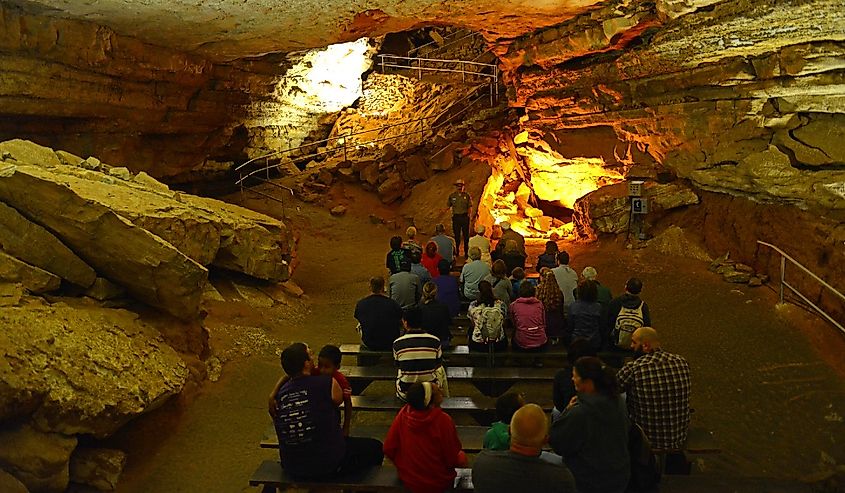
Cave Tours
The most popular attraction in Mammoth Cave National Park, cave tours showcase the park’s rich history and geology. Varying in length and intensity, visitors can pick from a wide range of tour options, depending on personal endurance and what they want to see. While the park is open year-round, keep in mind that tour availability also depends on the season. It is recommended to research times and reserve tickets ahead, especially since cave tours frequently sell out in the summer and early fall.
For a self-guided cave adventure, the Extended Discovery Tour leads explorers through a two-century-old tourist trail. With helpful rangers stationed along the way, this trail guides hikers into Mammoth Cave's most well-known entrance. Alternatively, for passionate spelunkers and thrill seekers, the Wild Cave Tour offers a more demanding excursion. The all-day underground adventure features tight and narrow spaces where crawling and climbing are required. Beyond these examples, there are countless tours to discover in Mammoth Cave National Park, so make sure to research a cave trail that is right for you.
Green River Recreation
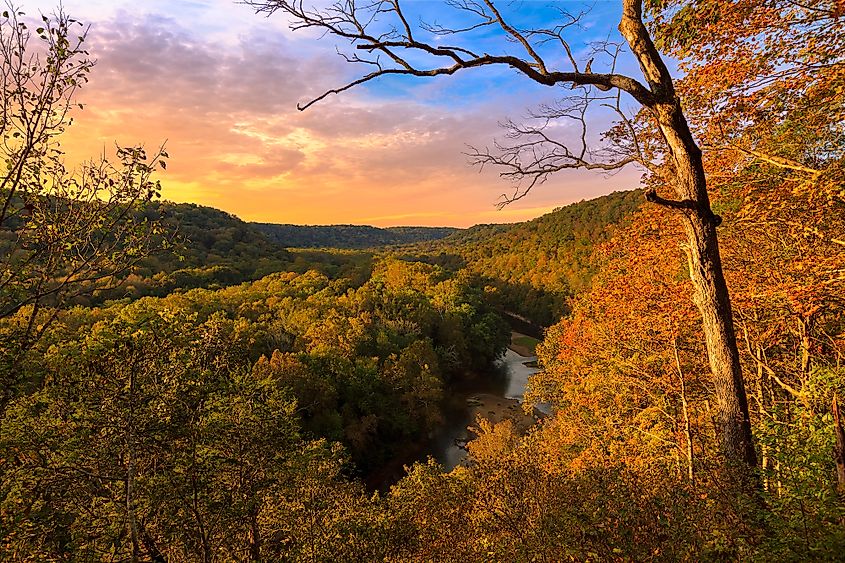
Back aboveground, the free-flowing Green River runs through Mammoth Cave National Park, a visual embodiment of the cave’s origins. A powerful tributary of the Ohio River, the Green River’s erosional force was integral to the formation of Mammoth Cave. Over millions of years, its waters helped carve caverns and tunnels into the prehistoric limestone.
Today, the racing waterway is a recreation haven, inviting park guests to paddle its waters, hike its bluffs, and cast a line from shore. Paddling gear can be rented from nearby outfitters like Green River Canoeing and Kayaking, while the Green River Bluffs Trail rewards hikers with gorgeous views. For anglers, the river is stocked with catfish, bass, perch, and bluegill, and no fishing permit or license is required to fish within the boundaries of the park.
Hiking Trails
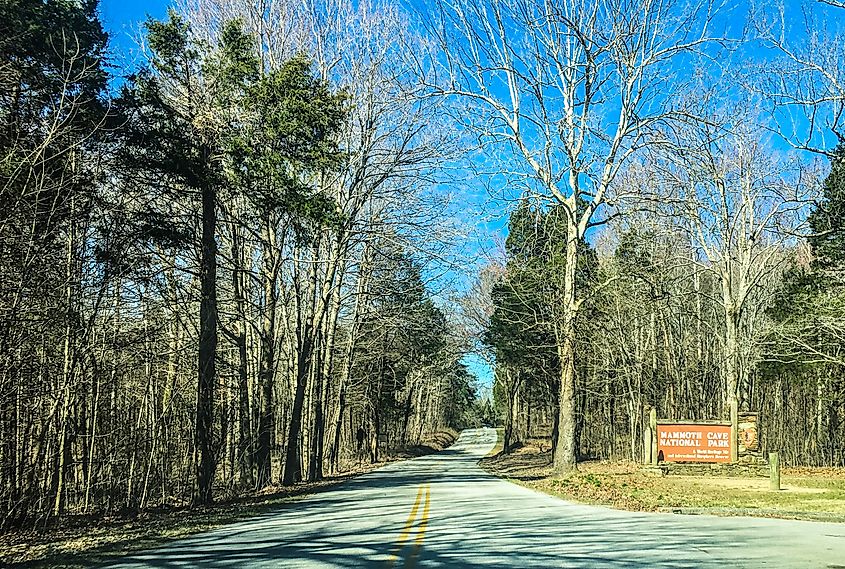
Although most associate Mammoth Cave National Park with its cave tours, its hiking trails reveal the area’s remarkable forestlands, historic landmarks, and geological features. Near the Visitor Center, hikers can find routes leading to sinkholes, historic cemeteries, cave-fed springs, and river overlooks. Popular paths include the one-mile Sinkhole Trail, the 0.3-mile Sunset Point Trail, the 0.6-mile Two Springs Trail, and the 0.1-mile Dixon Cave Overlook Trail.
Along the main park road, hikers can travel deeper into the park’s forests. Popular routes include the one-mile Cedar Sink Trail, the 0.7-mile Echo River Springs Loop Trail, and the half-mile Turnhole Bend Nature Trail. For an even longer journey into the depths of the park, backcountry hiking reveals forest ridges, sweeping valleys, and jaw-dropping vistas on paths like the six-mile Raymer Hollow Trail.
Is Mammoth Cave National Park Haunted?
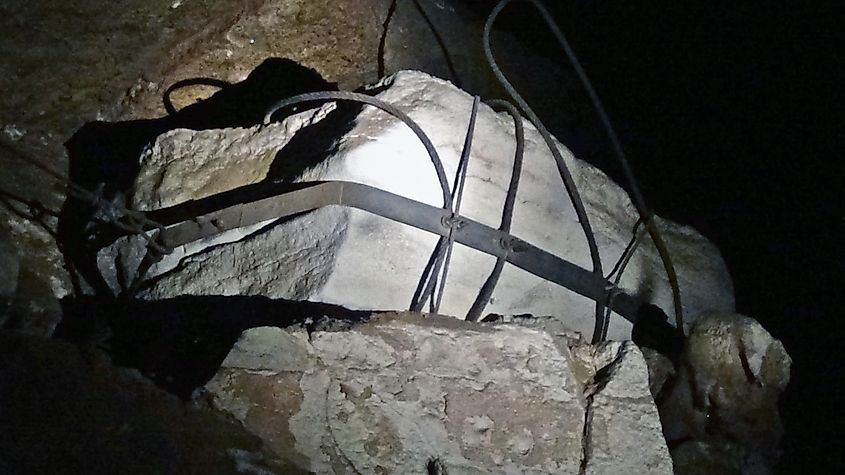
In a 2009 article by National Parks Traveler, the journal explores Mammoth Cave’s history of ghost stories. As of then, over 150 paranormal reports had been documented, according to National Parks Traveler, including countless testimonials from park guides and rangers. While some claimed to see apparitions in the caves, others claimed to hear voices from invisible entities. Many of these witnesses, knowledgeable about Mammoth Cave’s past, connected their experiences to historic events and figures, like the 19th-century enslaved cave guides.
Whether these paranormal claims are true, imagined, or explained by the natural creaks and groans of the caverns, Mammoth Cave has a powerful presence beyond its tangible beauty. Even some of the most non-superstitious visitors have described feelings of overwhelming awe after touring the cave’s passageways. Much like the awe we feel at the Grand Canyon, both types of spiritual encounters can be explained by a desire to experience something bigger than ourselves.
While we understand much of Mammoth Cave on a scientific and archeological level, we crave the intense feelings it generates. Although we have many answers for its origins and depths, it continues to draw us in, thousands of years after its first Indigenous visitors. Whether stemming from a desire to spot the cave’s ghosts or from the desire to hear the whispers of ancient streams, Mammoth Cave invites its visitors to delve deeper.
